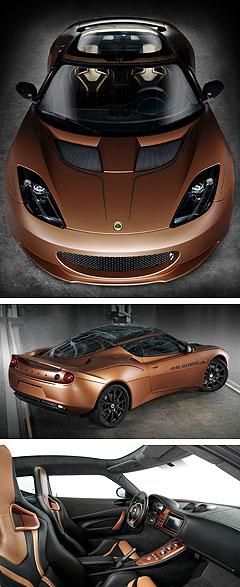Lotus tests Evora hybrid
BY DAVID HASSALL | 2nd Jul 2012

Dynamic and durability testing of the Evora 414E Range Extender Hybrid Electric Vehicle (REEV) commenced recently – ahead of schedule, according to Lotus – at the company’s private test track surrounding its HQ at Hethel in the UK.
The high-performance EV also appeared as a static display at last weekend’s Goodwood Festival of Speed, where Lotus was the featured marque.
Its two electric motors, which drive through an Xtrac 1092 transmission, both drive the rear wheels and produce 309kW of power and some 1000Nm of torque – two and a half times more than the standard Evora – for a 0-100km/h sprint time of just 4.0 seconds.
The car has a top speed of 209km/h and is Lotus Engineering has targeted an emissions level of just 55 grams per kilometre under the Northern European Driving Cycle (NEDC).
Like the forthcoming Holden Volt, the Evora 414E runs purely on electricity stored in its battery pack for a distance of up to 48km, and uses its on-board petrol engine as a generator to recharge the battery when required.

If the car is used only for short runs with a moderate throttle and is regularly recharged by plugging into mains power, the petrol engine would not be required.
Lotus Engineering’s principal vehicle dynamics test and development engineer, Simon Corbett, who has done most of the development testing, said he was amazed by the car’s performance.
“The Evora S has 400Nm of torque, which in such a lightweight car is already a healthy figure, but the Evora 414E has two and a half times that amount.
“The acceleration sensation is almost indescribable. The surge of torque is like an ocean wave.”The Evora 414E was first displayed at the Geneva motor show in February 2010 as a concept car that was “the perfect demonstration of Lotus Engineering’s core competencies: lightweight architectures, efficient performance, electrical and electronics integration and driving dynamics”.